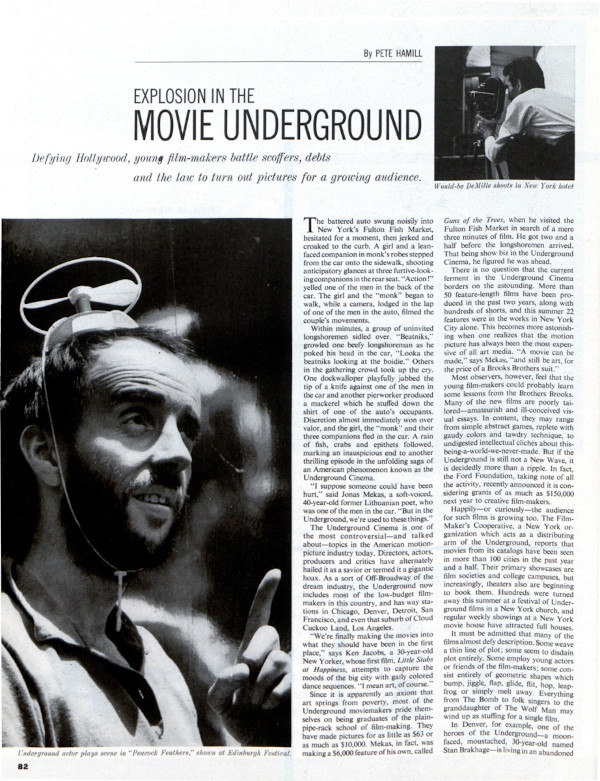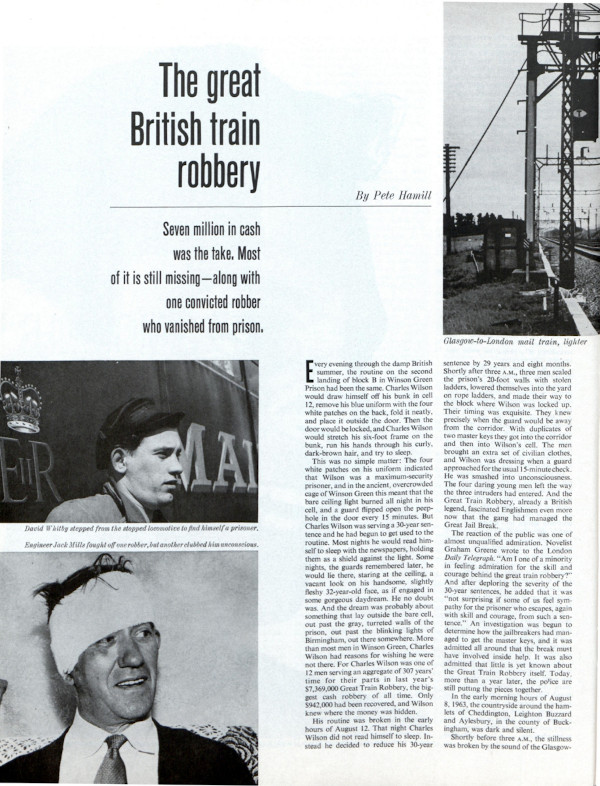Remembering Titan of Journalism Pete Hamill
Legendary journalist Pete Hamill died yesterday at age 85. The illustrious writer was described as a “quintessential New York journalist” for his decades of work in The New York Post, The Daily News, The Village Voice, Esquire, The New Yorker, Playboy, and The Saturday Evening Post. He published short stories and novels too, along with a memoir and books of essays.
In newspapers, Hamill became known for his plainspoken columns, giving on-the-ground perspective of culture and justice in his home city. For this magazine, he travelled Europe in the early ’60s, sending back celebrity profiles and stories of crime and labor disputes.
Hamill’s knack for skillfully undressing New York City was clear in one of his earliest stories for the Post, “Explosion in the Movie Underground,” printed on September 28, 1963. Years before the New Hollywood era of cinema was declared, Hamill documented the experimental filmmakers working on the streets of New York. He was skeptical of some of the “amateurish and ill-conceived visual essays” that were being produced, but he described the guerrilla directors and their makeshift moviemaking with the kind of sincere, closeup reporting that was a hallmark of his work.

In another Post story, “The Great British Train Robbery” (September 19, 1964), Hamill covered the largest (at the time) cash robbery of all time, in which 15 men stopped a Royal Mail train and took off with more than 7 million dollars. He detailed the puzzling case of the 1963 Great Robbery and subsequent “Great Jail Break” that left British police scratching their heads and the public oddly impressed and intrigued.

Journalists and editors mourned Hamill’s passing. New York Daily News columnist Mike Lupica tweeted “As Pete once said of another New Yorker, it’s like a hundred guys just left the room,” and former New York Times writer Clyde Haberman tweeted “the world just became a far less interesting place.” Daily News reporter William Sherman wrote in an e-mail that Hamill was about the fastest writer he ever saw: “He had an preternatural understanding of the city and its people from the top hats on Fifth to the longshoremen on 12th at the River. He knew how to listen, which he advised us beginners as most important.”
In a phone call, Gay Talese recalled meeting Hamill while covering prizefighter José Torres in the late ’50s. “I’ve been living in New York for 75 of my 88 years,” he said. “I’ve known so many different writers, from poets to playwrights to journalists, and Hamill was a combination of all of those things, and he had the capacity for and time for friendship. I felt he was one of my best friends.” Talese said that Hamill’s life crisscrossed the lives of both the writing profession and nightlife: “I knew him when he was and wasn’t drinking and I couldn’t tell the difference because he was always a nice guy … he lived an extraordinary life.”
Hamill expressed his opinions on the Post in no uncertain terms soon after it folded in 1969 in a column in The Village Voice. He had visited the deserted offices on Lexington Avenue and gave a close account of the magazine’s downfall: criticism coupled with credit where credit was due for what he saw as the interesting work done in the ’60s. “At the end,” he wrote, “with the magazine collapsing around them, the Post editors finally saw fit to commission Norman Mailer to write something for them. It will never be printed by the Post.”
Hamill’s journalistic world of pounding out copy on a typewriter and throwing cigarette butts on the floor may be long over, but his intense passion for the truth, and his tendency to take to the streets to find it, is a lasting inspiration in every newsroom.
Featured image by David Shankbone, edited via the Creative Commons Attribution-Share Alike 3.0 Unported license, GNU Free Documentation License, Version 1.2.